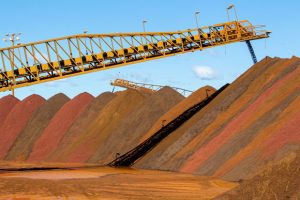Iron ore market characterized by volatility
The iron ore price has been about as volatile of late as most of us can remember.
The price powered relentlessly upwards this year on the back of surging demand from China and constrained supply from Brazil.
Then, after hitting a peak May 10 and 12, it fell sharply into bear territory, as Beijing sought to dampen inflationary raw material costs by issuing a string of warnings about speculation and excessive pricing.
Having achieved its objective in dampening prices, you would think Beijing would have left it at that.
But last week, China’s Ministry of Industry and Information Technology said it will seek to establish a mechanism to contain steel output based on carbon emissions, pollutant discharges and energy consumption, Bloomberg reported.
The MetalMiner Best Practice Library offers a wealth of knowledge and tips to help buyers stay on top of metals markets and buying strategies.
Iron ore bounces back
Iron ore promptly bounced back, climbing more than 6% in Singapore. Meanwhile, steel futures in Shanghai recovering on fears of constrained steel supply.
The market is trying to work out what this new policy will mean for steel production and, hence, iron ore demand.
“This prospective new policy looks likely to have a bigger impact on steel output than other policies Beijing has introduced in recent times,” Daniel Hynes, a senior commodity strategist at ANZ, is quoted in The Australian Financial Review as saying.
Commonwealth Bank highlighted how critical steel is to China achieving lower levels of environmental pollution and CO2 discharges, saying said steel accounted for roughly 15% of China’s carbon emissions, making it a prime target for action.
Goldman Sachs remains bullish on nearly all commodities. However, most observers believe iron ore’s current rise is a last hurrah and see rising Brazilian output, up 20% over the last 14 days and 16% year over year, as leading indicators of a fall in prices.
UBS’s base case iron ore forecast is US $139 a metric ton this year, reaching as low as US$ 75 per metric ton in 2024. Capital Economics expects the price to drop back to around $140 per metric ton by the end of 2021, and $120 per ton by the end of 2022 as the market shifts into a surplus.
Each month, MetalMiner hosts a webinar on a specific metals topic. Explore the upcoming webinars and sign up for each on the MetalMiner Events page.




Leave a Reply